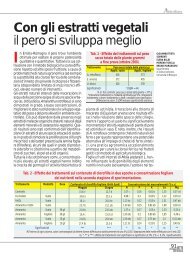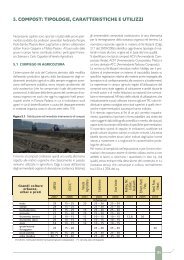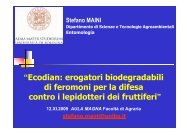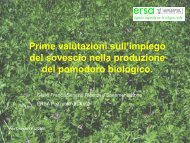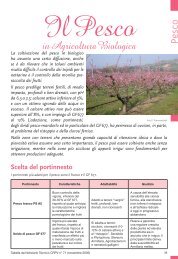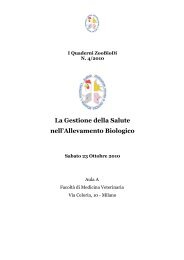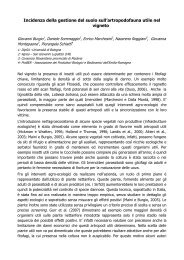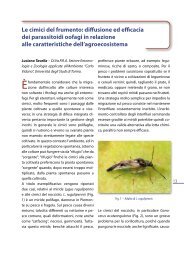You also want an ePaper? Increase the reach of your titles
YUMPU automatically turns print PDFs into web optimized ePapers that Google loves.
Petria 20 (1), 1-72 (2010) – Atti Convegno - Ancona, 26 Febbraio/February 2010l’uso di fosfiti di potassio. La difesa integrata con ricorso ad ammendanti elicitori diautodifesa della vite e gli interventi agronomici, quali corrette tecniche colturali e usodi macchine per la distribuzione predisposte per il recupero della poltiglia dispersa,possono rappresentare nuove prospettive per sostenere e favorire l’uso del rame inviticoltura biologica.Parole chiave: Difesa biologica, Difesa integrata, Peronospora, Rame, Vite.Organic viticulture and control of downy mildew in highepidemic risk environmentsIn the plain vinegrowing area of Treviso province, the control of Plasmoparaviticola in organic farming faces clear difficulties because of the climatic conditionsof frequent rainfall and high humidity. Several trials have been carried out on cv.Merlot to define suitable control strategies against primary and secondary infectionsof P. viticola, with the choice of copper products and their doses in accordance withthe production regulations (CE Reg. 2092/91 and further modifications).Along the years, the factor “year” strongly influenced the epidemiology ofgrapevine downy mildew, which eventually caused severe yield losses in the untreatedplots. Only in the few years with low rainfall during the pre-bloom stage did thedisease show reduced virulence on the leaves and the bunches. In the comparison trialswith the use of copper products only vs. integrated products, where copper was in theform of acupric products (mixtures of various contact or endotherapic fungicides orK-phosphyte fertilizers), the best results where achieved with the integrated strategy.Nevertheless, when climatic conditions are particularly favourable to P. viticola, asseen in 2008, some deficiencies are still possible.The use of copper products alone can cause difficulties in disease control,mainly in the years when the pathogen appears before bloom. The climatic conditionsfavourable to the pathogen still being present after fruit-set have further reduced thepossibility of controlling the damage, both to leaves and bunches. Relatively betterresults were seen with the use of copper hydroxide, in comparison with the othercopper salts.Considering the high number of treatments that were necessary in theenvironment investigated, the amount of copper was mostly higher than the limitsstated by the organic farming regulations. In situations with high epidemic risk, theuse of copper salts alone is not sufficient to achieve complete control of P. viticola.Great significance is ascribed to the leaf susceptibility to primary andsecondary infections in the pre- and post-bloom stages, when climatic conditionsappear to be very important, and in the case of rainfall, for the use of potassiumphosphytes. Integrated control through the use of elicitors of grapevine self-defenceand agronomical operations, such as the adoption of rational coltural practices andthe use of spraying machines with recovery of the dispersed mixture, can offer newperspectives to strengthen and extend the use of copper in organic viticulture.Key words: Copper, Downy mildew, Grapevine, Integrated control, Organic control.18



